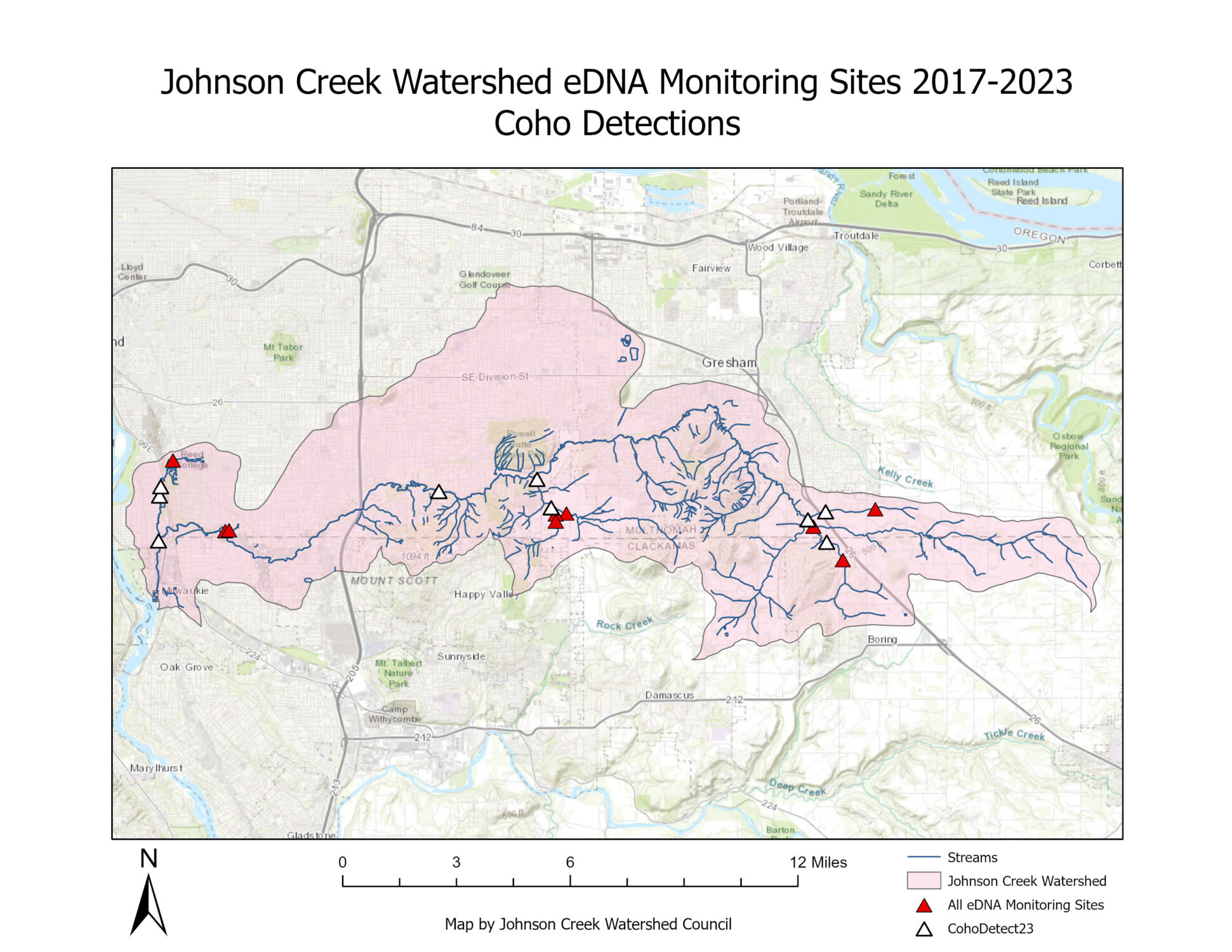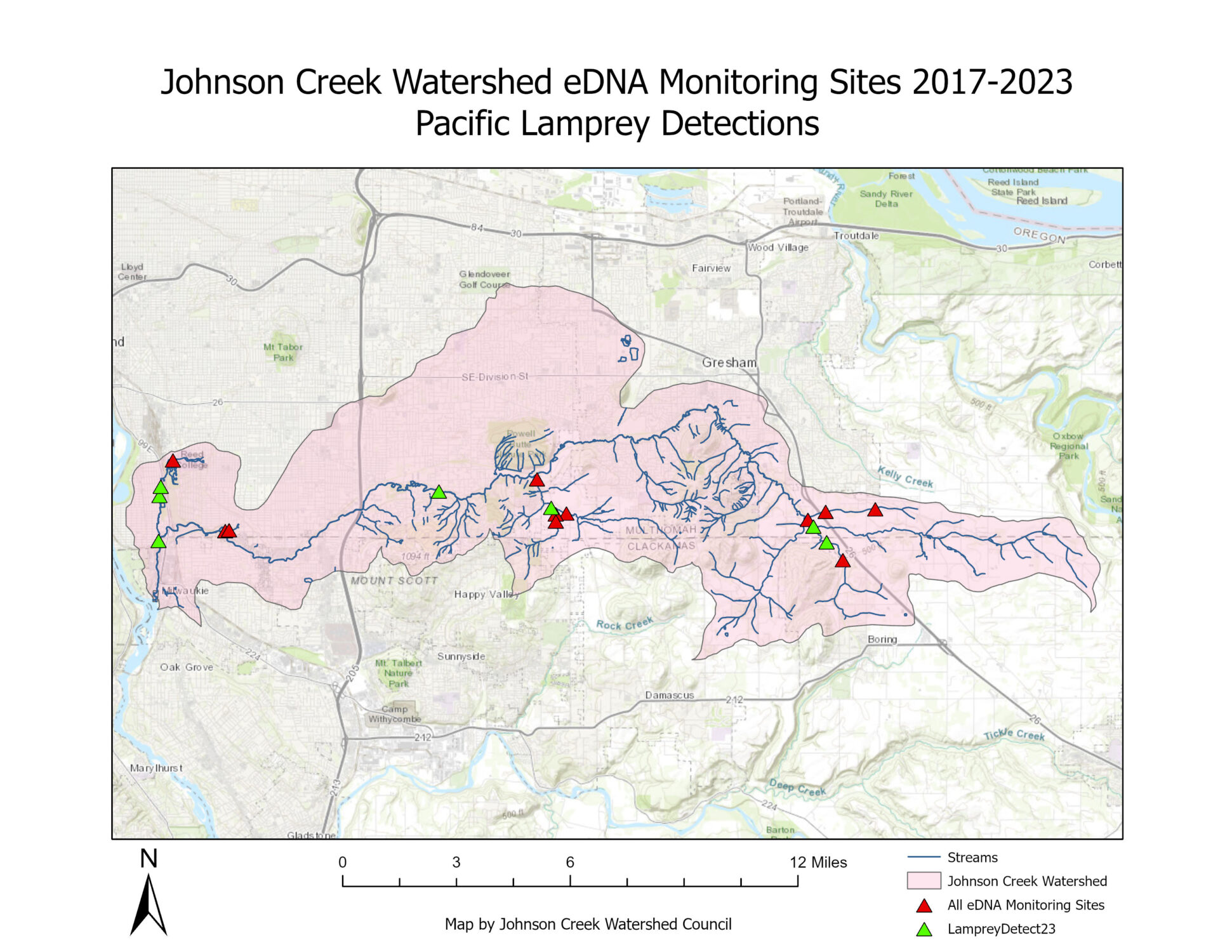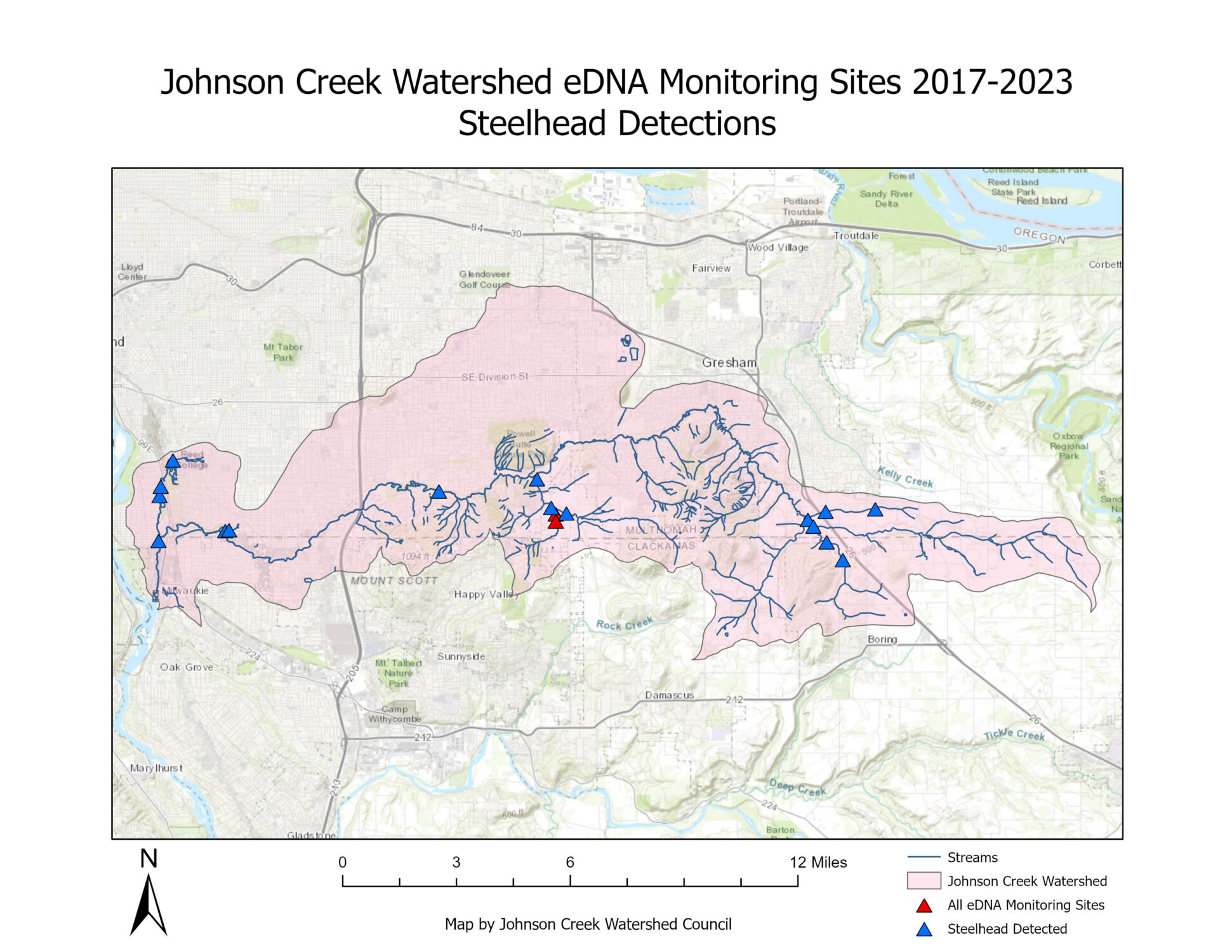After four years of collecting water samples in Johnson Creek and its tributaries, we’re finding that Coho salmon, Steelhead/Rainbow trout, and Pacific Lamprey are moving beyond locations where JCWC has removed barriers to fish passage. We’ve learned this by filtering stream water and sending the filters to a lab to analyze the bits of DNA–scales and feces–that were trapped in the filter. Many of these barrier locations were sampled before and after we removed, replaced or retrofitted culverts allow us to track the progress of these fish.

In the map above, the white triangles denote where we’ve detected coho salmon DNA. Because the salmon DNA may not be floating downstream at the exact time we’re measuring, we need to keep monitoring, year after year at different times, to get a clear picture of what species are in the streams. We’re particularly excited that Coho salmon consistently are detected at the site of a dam we removed on Kelley Creek in 2020. Last year, Coho was detected on North Fork Johnson Creek at the furthest barrier upstream that we’ve addressed (at SE 267th St). We’ve also detected Coho on Badger Creek. Portland Bureau of Environmental Services has found Coho DNA at several locations in Crystal Springs Creek.

The map above shows Pacific Lamprey detections. Lamprey are among the oldest genus of fish on Earth. Like salmon, they also hold a special cultural and religious significance for many Indigenous Tribes. There are likely a lot more Pacific Lamprey in the Johnson Creek stream network than we’re detecting. Juvenile lamprey, known as ammocetes, bury into the mud during much of their lives at that stage, so they’re difficult to detect with DNA analysis. Our analysis shows they’re in mainstem Johnson Creek in the upper watershed, and in Badger Creek and in Kelley Creek above the dam we removed.

As you’ll see from the map above, the real success story with fish passage projects is how Steelhead/Rainbow Trout have navigated the streams where barriers formerly existed. We’ve detected this athletic trout species everywhere we’ve sampled except for Mitchell Creek. We’ve removed several barriers on Mitchell Creek, so it’s time for us to do some detective work!
